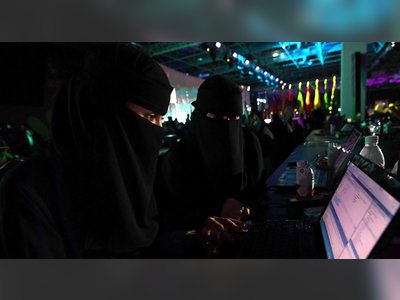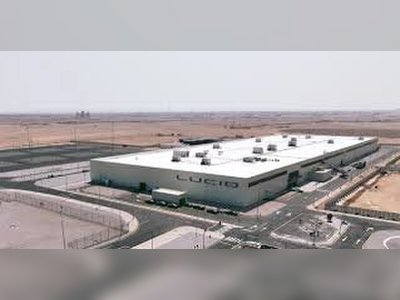
ChatGPT took their jobs. Now they walk dogs and fix air conditioners.
The advent of ChatGPT, an advanced chatbot powered by artificial intelligence (AI), is reshaping the job market, causing upheaval among copywriters and content creators who find themselves increasingly replaced by the technology. The impact of this AI revolution is illustrated by the experiences of Olivia Lipkin, a 25-year-old copywriter based in San Francisco, who was gradually sidelined and ultimately laid off in favor of ChatGPT at the tech start-up where she worked.
As articles circulated within the company on how to integrate ChatGPT into various job functions, Lipkin observed her assignments dwindling, and her anxiety grew as managers began referring to her as "Olivia/ChatGPT" on internal Slack groups. The confirmation of her fears came when she discovered managers discussing the cost-effectiveness of using ChatGPT over paying a human writer. In April, she was abruptly let go without explanation, solidifying the notion that AI had indeed displaced her.
The rapid advancements in AI technology have resulted in chatbots capable of engaging in natural conversations, generating written content, composing music, and even producing computer code. In the race to mainstream these products, Silicon Valley companies are offering AI-driven tools to millions of users, often at no cost. Economists predict that this technology has the potential to automate a significant number of jobs, leading to a monumental workforce restructuring akin to the industrial revolution. However, skeptics argue that AI chatbots will serve as aids, allowing humans to work more efficiently.
While some view the impact of AI as exaggerated, the repercussions are tangible for certain workers. Professionals involved in marketing and social media content creation are at the forefront of the first wave of individuals being replaced by chatbots, which are increasingly capable of producing plausible alternatives to their work.
Experts emphasize that even the most advanced AI still falls short of human writing skills. AI lacks a personal voice, style, and often produces incorrect, nonsensical, or biased responses. However, for many companies, the cost-cutting benefits outweigh any potential decline in quality.
Sarah T. Roberts, an associate professor specializing in digital labor at the University of California, Los Angeles, warns that a crisis point has been reached, noting that AI is now encroaching on jobs that were once thought to be immune to automation.
Generative AI, utilizing complex algorithms trained on vast amounts of data from the internet, poses a new level of disruption. Its ability to generate human-like prose places highly paid knowledge workers at risk of replacement. Ethan Mollick, an associate professor at the University of Pennsylvania's Wharton School of Business, emphasizes that this time the threat of automation targets the highest-earning, most creative jobs that require substantial educational backgrounds.
Goldman Sachs predicted that AI could automate 18 percent of work worldwide, with white-collar workers such as lawyers facing higher risks compared to those in physical labor-intensive trades. The White House has also recognized the potential disruption, acknowledging that AI has the capacity to automate "nonroutine" tasks.
Yet, Mollick cautions that it is premature to gauge the full impact of AI on the workforce. Jobs like copywriting, document translation, transcription, and paralegal work are particularly susceptible to automation, as chatbots excel in these areas. Conversely, high-level legal analysis, creative writing, and artistic endeavors remain difficult to replicate, as humans still outperform AI in these realms.
Eric Fein, a content writer running his own business, recently experienced the devastating consequences of chatbot adoption. After a decade of successful operations, his largest client informed him that they would be transitioning to ChatGPT, causing all his contracts to be canceled one by one. Although Fein's clients understood the limitations of ChatGPT's creativity, technical precision, and originality, they favored the cost savings associated with the chatbot.
Companies that have rushed to incorporate chatbots have encountered notable setbacks. Instances of articles containing errors, fictitious legal cases in briefs, and chatbots providing insensitive and harmful advice have highlighted the potential pitfalls of relying solely on AI.
Roberts points out that chatbots can produce costly errors, cautioning against hasty adoption without fully assessing the consequences. By design, chatbots generate average content by predicting the statistically most likely word in a sentence. This presents a dilemma for companies: quality versus cost.
The story of Olivia Lipkin serves as a cautionary tale for copywriters and content creators facing uncertain futures. Lipkin, disillusioned by her experience in content marketing, which left her burnt out and unable to pursue her own creative writing, has chosen to take a break from the office world and become a dog walker.
The push for the cheapest solution, which often involves replacing human workers with robots, underscores the pressing need to reconsider the balance between quality and cost. As industries grapple with the disruption caused by AI, individuals like Lipkin are seeking alternative career paths that leverage skills and expertise that AI cannot replicate.
The future of work in the age of AI remains uncertain. The impact will vary across sectors, and the extent of disruption will largely depend on the complexity of tasks involved. As the conversation surrounding AI and automation continues, the challenges and opportunities that lie ahead will shape the workforce of tomorrow.
The rapid advancements in AI technology have resulted in chatbots capable of engaging in natural conversations, generating written content, composing music, and even producing computer code. In the race to mainstream these products, Silicon Valley companies are offering AI-driven tools to millions of users, often at no cost. Economists predict that this technology has the potential to automate a significant number of jobs, leading to a monumental workforce restructuring akin to the industrial revolution. However, skeptics argue that AI chatbots will serve as aids, allowing humans to work more efficiently.
While some view the impact of AI as exaggerated, the repercussions are tangible for certain workers. Professionals involved in marketing and social media content creation are at the forefront of the first wave of individuals being replaced by chatbots, which are increasingly capable of producing plausible alternatives to their work.
Experts emphasize that even the most advanced AI still falls short of human writing skills. AI lacks a personal voice, style, and often produces incorrect, nonsensical, or biased responses. However, for many companies, the cost-cutting benefits outweigh any potential decline in quality.
Sarah T. Roberts, an associate professor specializing in digital labor at the University of California, Los Angeles, warns that a crisis point has been reached, noting that AI is now encroaching on jobs that were once thought to be immune to automation.
Generative AI, utilizing complex algorithms trained on vast amounts of data from the internet, poses a new level of disruption. Its ability to generate human-like prose places highly paid knowledge workers at risk of replacement. Ethan Mollick, an associate professor at the University of Pennsylvania's Wharton School of Business, emphasizes that this time the threat of automation targets the highest-earning, most creative jobs that require substantial educational backgrounds.
Goldman Sachs predicted that AI could automate 18 percent of work worldwide, with white-collar workers such as lawyers facing higher risks compared to those in physical labor-intensive trades. The White House has also recognized the potential disruption, acknowledging that AI has the capacity to automate "nonroutine" tasks.
Yet, Mollick cautions that it is premature to gauge the full impact of AI on the workforce. Jobs like copywriting, document translation, transcription, and paralegal work are particularly susceptible to automation, as chatbots excel in these areas. Conversely, high-level legal analysis, creative writing, and artistic endeavors remain difficult to replicate, as humans still outperform AI in these realms.
Eric Fein, a content writer running his own business, recently experienced the devastating consequences of chatbot adoption. After a decade of successful operations, his largest client informed him that they would be transitioning to ChatGPT, causing all his contracts to be canceled one by one. Although Fein's clients understood the limitations of ChatGPT's creativity, technical precision, and originality, they favored the cost savings associated with the chatbot.
Companies that have rushed to incorporate chatbots have encountered notable setbacks. Instances of articles containing errors, fictitious legal cases in briefs, and chatbots providing insensitive and harmful advice have highlighted the potential pitfalls of relying solely on AI.
Roberts points out that chatbots can produce costly errors, cautioning against hasty adoption without fully assessing the consequences. By design, chatbots generate average content by predicting the statistically most likely word in a sentence. This presents a dilemma for companies: quality versus cost.
The story of Olivia Lipkin serves as a cautionary tale for copywriters and content creators facing uncertain futures. Lipkin, disillusioned by her experience in content marketing, which left her burnt out and unable to pursue her own creative writing, has chosen to take a break from the office world and become a dog walker.
The push for the cheapest solution, which often involves replacing human workers with robots, underscores the pressing need to reconsider the balance between quality and cost. As industries grapple with the disruption caused by AI, individuals like Lipkin are seeking alternative career paths that leverage skills and expertise that AI cannot replicate.
The future of work in the age of AI remains uncertain. The impact will vary across sectors, and the extent of disruption will largely depend on the complexity of tasks involved. As the conversation surrounding AI and automation continues, the challenges and opportunities that lie ahead will shape the workforce of tomorrow.











